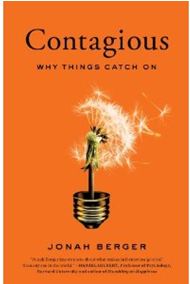
Laura Huang
Entrepreneurs create jobs and contribute to economic growth with early investment by financial backers who trust the perceived business proposal’s viability and the founders’ previous experience.

Alison Wood Brooks
Additional implicit criteria for new venture-funding include gender and physical attractiveness, asserted Harvard’s Alison Wood Brooks, Laura Huang of Wharton, MIT’s Sarah Wood Kearney and Fiona E. Murray.

Sarah Wood Kearney
Brooks and colleagues enlisted 60 experienced investors to:
- Evaluate videos of 90 randomly-selected presentations by entrepreneurs at three pitch contests in the US,
- Comment on presenters’ appearance and effectiveness.

Fiona E. Murray
Male presenters who were rated more attractive were 36% more likely to receive funding than men judged as less attractive, but there was no difference in funding rates for women based on attractiveness ratings.
In a separate study, investors evaluated identical pitches delivered by a man or a woman, and rated male-narrated pitches as more persuasive, logical and fact-based compared with the same presentation delivered by a woman.
These finding suggest that financial backers favor attractive male entrepreneurs, leaving women entrepreneurs – attractive or not – at a disadvantage in creating new businesses, jobs, and economic growth.
This finding underscores financial backers’ preference for male entrepreneurs’ proposals, based on attractive men’s greater perceived persuasiveness than women or less attractive men.

Edward Thorndike
Previous blog posts have noted the “halo effect” of physical attractiveness leading to positive attributions of intelligence, competence, and likeability, originally described by Columbia’s Edward Thorndike.
Woods’ latest findings point to the double advantage enjoyed by attractive men seeking new venture funding.
Aspiring women entrepreneurs, on the other hand, continue to encounter significant unacknowledged disadvantages, not improved by physical attractiveness.

Eleanor Holly Buttner
However, these findings were not confirmed by University of North Carolina’s E. Holly Buttner and Benson Rosen in their investigation of bank loan officers’ funding decisions.
Loan officers, who typically make funding decisions based on the business plan and interview with the entrepreneur, evaluated a:
- Business plan or
- Business plan plus a videotaped interview conducted by a loan officer with a male or female entrepreneur seeking a loan to start a business.

Benson Rosen
Bankers rated their likelihood of:
- Recommending loan approval of the requested amount,
- Making a counteroffer of a smaller amount, which they specified.
This study found no difference in funding decisions for male entrepreneurs compared with female entrepreneurs presenting the same business case.
In fact, loan officers made larger counteroffers to female entrepreneurs when considering both the business plan and the loan application interview.
Student volunteers’ loan funding decisions were compared with loan professionals, and the younger generation of lay people made larger counteroffers to the male entrepreneur instead of the female when they evaluated both the business plan and the loan interview,
Loan officers, in contrast, made significantly more cautious and conservative funding decisions than student participants.
Buttner and Benson recommended that female entrepreneurs ask to meet with loan officers to present their business proposals because this personal contact resulted in more successful funding of requested loans.

John Becker-Blease
Another source of funding is “angel investors,” and Oregon State University’s John R. Becker-Blease and Jeffrey E. Sohl of University of New Hampshire found no difference in funding for male and female entrepreneurs.
They noted that women seek private investments substantially lower rates than men, but they are equally likely to receive investment.
However, when the “angels” are women, female entrepreneurs are more likely to seek financing and are as likely to receive the requested funding.

Jeffrey Sohl
Women entrepreneurs may still face obstacles in starting new ventures, a barrier shared with less attractive males.
-*How do you mitigate biases based on gender or attractiveness when asking for funding – for a business, initiative, or idea?
RELATED POSTS:
Follow-share-like http://www.kathrynwelds.com and @kathrynwelds
Twitter @kathrynwelds
Blog – Kathryn Welds | Curated Research and Commentary
Google+
LinkedIn Open Group Psychology in Human Resources (Organisational Psychology)
Facebook Notes
©Kathryn Welds




























































